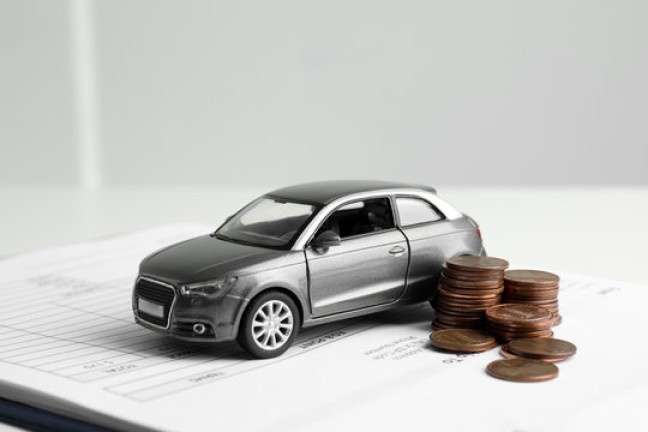When you’re considering buying a car through financing, one of the most important factors to understand is the “amount financed.” It sounds simple, but it involves several elements that can significantly impact the overall cost of your loan and monthly payments. I’ve found that getting a solid grip on this concept can help you make more informed decisions when choosing a loan. In this article, I’ll walk you through what the amount financed is, how it is determined, and how it affects your car loan. I’ll also break things down using real-life examples and calculations to illustrate how small changes can make a big difference.
Table of Contents
What Is the Amount Financed?
The amount financed refers to the total amount of money you borrow from a lender to purchase a car. It is essentially the loan balance after you factor in your down payment, trade-in value (if any), and other applicable fees or rebates. To put it simply, it’s the portion of the car’s purchase price that the lender agrees to cover.
How Is the Amount Financed Calculated?
To calculate the amount financed, you need to subtract any upfront payments or trade-in values from the car’s total purchase price. This includes:
- Down Payment: The amount of money you pay upfront for the car.
- Trade-in Value: The amount you receive for your old car if you choose to trade it in.
- Additional Fees or Rebates: These might include things like taxes, title fees, or manufacturer rebates.
Example Calculation
Let’s say you want to buy a car worth $25,000. You make a down payment of $5,000 and trade in your old car, which is valued at $4,000. There are no additional fees or rebates in this case.
Here’s the math:
- Car Price: $25,000
- Down Payment: $5,000
- Trade-in Value: $4,000
Amount Financed = Car Price – Down Payment – Trade-in Value
Amount Financed = $25,000 – $5,000 – $4,000 = $16,000
In this case, the amount financed is $16,000. This is the total loan amount the lender will cover.
Why Does the Amount Financed Matter?
The amount financed is crucial because it directly influences your loan terms, including:
- Interest Rates: Lenders typically offer better interest rates for smaller loan amounts. The higher the amount financed, the more you’ll likely pay in interest over the life of the loan.
- Monthly Payments: A higher amount financed means higher monthly payments. This is especially important if you’re working with a tight budget.
- Loan Duration: A larger loan amount might also require a longer loan term, meaning you’ll be paying the loan off over a more extended period, which can result in paying more interest overall.
Table: Impact of Loan Amount on Monthly Payments
Let’s take a look at how the amount financed affects monthly payments. For this example, I’m going to assume an interest rate of 5% and a loan term of 60 months (5 years).
| Amount Financed | Monthly Payment (5% Interest, 60 months) | Total Paid Over Loan Term |
|---|---|---|
| $10,000 | $188.71 | $11,322.72 |
| $16,000 | $302.98 | $18,178.80 |
| $20,000 | $378.32 | $22,699.20 |
As you can see, as the amount financed increases, so do the monthly payments. If you financed $20,000 instead of $10,000, your monthly payment would increase by more than $180, and you’d pay an additional $11,000 over the life of the loan.
How to Reduce the Amount Financed
If you want to reduce the amount financed to make your loan more manageable, there are several strategies to consider:
- Increase Your Down Payment: The more you can pay upfront, the less you’ll need to borrow. This might require saving for a bit longer, but it can make a significant difference in your monthly payments and the total interest paid over the life of the loan.For example, if you increased your down payment by $2,000, your amount financed would drop from $16,000 to $14,000, and your monthly payments would be lower.
- Trade In Your Old Car: If you have a car that still holds value, consider trading it in. This can lower your amount financed and help you get a better deal on the loan.Let’s say, in the previous example, you increased your trade-in value by $2,000. Instead of financing $16,000, you’d only finance $14,000, lowering your monthly payment.
- Look for Rebates or Discounts: Manufacturers often offer rebates or special deals that can reduce the purchase price of the car, which will, in turn, lower the amount financed.
- Shop Around for a Lower-Priced Car: Sometimes the best way to reduce the amount financed is to choose a less expensive car. While this may not always be the easiest choice, it can lead to lower monthly payments and less debt overall.
Example with a Higher Down Payment
Let’s revisit the original example where the amount financed was $16,000. If you made a down payment of $7,000 instead of $5,000, your new calculation would look like this:
- Car Price: $25,000
- Down Payment: $7,000
- Trade-in Value: $4,000
Amount Financed = $25,000 – $7,000 – $4,000 = $14,000
The amount financed now is $14,000, which would lead to lower monthly payments and overall interest paid.
What Happens If You Don’t Consider the Amount Financed Carefully?
If you don’t pay attention to the amount financed, you might find yourself in a situation where your loan payments are higher than expected. This could lead to financial strain, especially if your income is tight or if unforeseen expenses arise. Additionally, a larger loan amount means you’ll be paying more in interest over the life of the loan.
Example of the Cost of Interest
Let’s assume two different amounts financed: $10,000 and $16,000, both with a 5% interest rate and a 60-month loan term.
| Amount Financed | Monthly Payment | Total Paid Over 5 Years | Total Interest Paid |
|---|---|---|---|
| $10,000 | $188.71 | $11,322.72 | $1,322.72 |
| $16,000 | $302.98 | $18,178.80 | $3,178.80 |
By financing $16,000 instead of $10,000, you’re paying an extra $1,856.08 in interest over the 5 years, simply because of the higher loan balance. This highlights why it’s essential to minimize the amount financed as much as possible.
Can I Finance the Full Price of the Car?
In some cases, lenders might offer 100% financing, meaning they will cover the entire cost of the car, including taxes, fees, and add-ons. While this sounds appealing, it’s important to understand the full cost of such a loan. You’ll be financing a higher amount, which means higher monthly payments and more interest over the life of the loan.
If you do opt for 100% financing, it’s wise to evaluate your budget and ensure that the higher payments won’t negatively affect your financial situation.
Conclusion
Understanding the amount financed is a critical aspect of securing a car loan. By grasping the impact it has on your monthly payments, total interest paid, and loan term, you can make more informed decisions about your car purchase. Whether you decide to make a larger down payment, trade in your old car, or find ways to reduce the purchase price, being mindful of the amount financed can save you money and keep your loan manageable.
The key takeaway is simple: the less you finance, the less you’ll pay overall. By being proactive about reducing the amount financed, you can create a loan that fits better within your budget and helps you avoid financial strain in the future.





